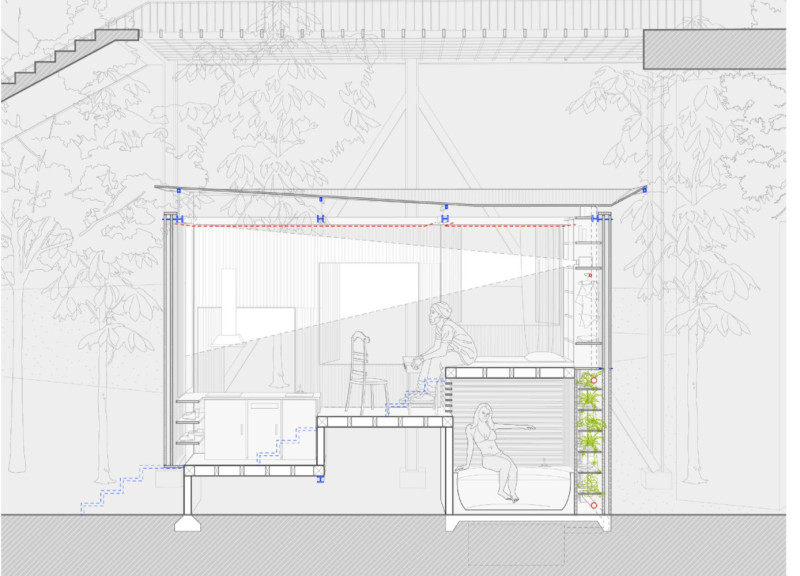5 key facts about this project
The Theater House offers a thoughtful approach to urban living challenges within a busy city marked by rising housing costs and neglected spaces. The design aims to create an alternative living experience that balances privacy with opportunities for community interaction. Drawing from the idea of theatricality, it incorporates varied spatial elements to enrich everyday life, making the ordinary engaging and enjoyable.
Spatial Organization
The design divides the residence into three distinct stages, each with its own specific function. This layered arrangement maximizes usable space while allowing for individualized living experiences. The changes in height provide privacy and create zones for interaction, promoting a sense of community among residents.
Multi-functional Integration
A key feature of the Theater House is the multi-functional shelf, which serves as the "backstage." This shelf combines several functions, including storage, maintenance, and a hydroponic garden. Such integration uses the compact living area wisely. A ladder leading to the bathroom highlights an innovative approach to utilizing limited space effectively.
Adaptable Privacy Solutions
Two curtain systems are incorporated into the design to allow for changes in privacy. These systems enable residents to control visibility and airflow in their living spaces, catering to their needs on a daily basis. This flexibility can enhance comfort, as people adjust the indoor environment according to the weather or time of day.
Sustainable Features
Sustainability is a core principle in the Theater House, specifically considering the Baltic climate. The heating system includes a bathtub that serves to warm both the bathing area and the sleeping space above. A rainwater collection system, integrated into the unique roof design, channels water into hydroponic shelves before it moves to a filtered water tank.
Natural light filters through large windows, illuminating the interior and creating a connection with the outside world, while the textured surfaces of the exterior offer a tactile quality that invites exploration.



















































